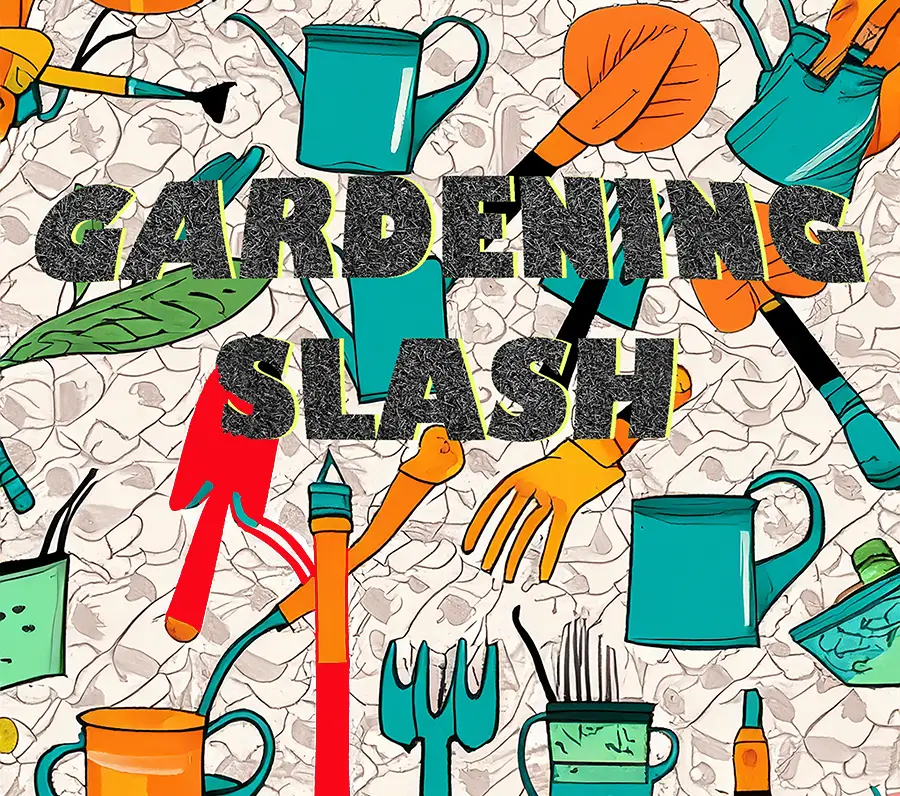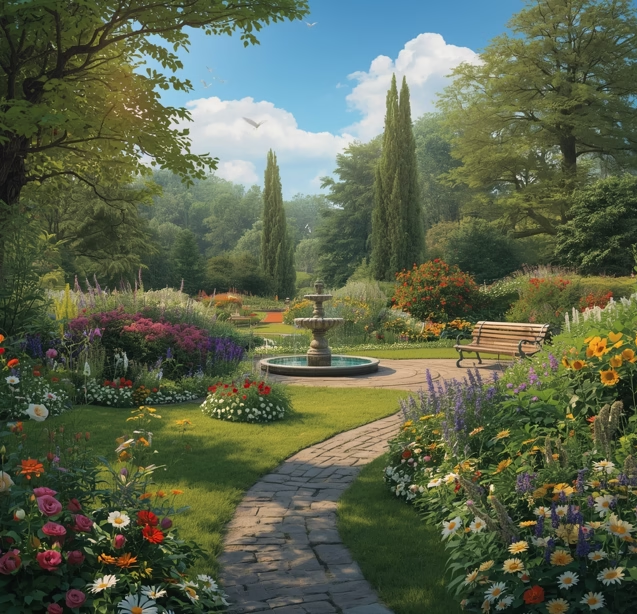“The garden suggests there might be a place where we can meet ourselves again.” — Michael Pollan
Gardening doesn’t have to be just rows of plants and a watering can. It can become a sanctuary, a teacher, and a source of continual wonder. In this post, we’ll explore not only the how of gardening, but the why—how to turn your outdoor (or indoor) green space into a living tapestry that nurtures your body, nourishes your spirit, and invites meaning into everyday life.
1. Birth of a Vision: Start with Intention
Before digging spade into soil, begin with a quiet moment: what do you want your garden to be?
-
Functional vs. Aesthetic – Do you want vegetables, herbs, pollinators, or purely ornamental beauty?
-
Mood & Atmosphere – Peaceful retreat? Vibrant riot of color? Meditative minimalist?
-
Scale & Constraints – Container gardening, balcony planters, small urban lot, or large yard?
-
Theme or Style – Native plants, cottage garden, xeriscape, foodie garden, Japanese-styled, etc.
A sketch or moodboard helps. List your priorities (food, flowers, wildlife, privacy), mark sun/shade areas, note water access. Your intention will guide every decision that follows.
2. Know Your Universe: Climate, Soil & Light
a) Climate & Microclimates
-
Your hardiness zone or local climate gives baseline constraints (frost dates, temperature extremes).
-
But microclimates matter: walls, fences, buildings, and tree cover create pockets of more or less sun, wind, heat.
-
Observe your space over a week: map where morning sun falls, where shade lingers, and where wind funnels through.
b) Soil Health: the Heart of the Garden
-
Test your soil’s pH, texture (clay, loam, sand), and fertility (nutrients). Many local extension services or garden centers offer cheap soil kits.
-
Amend mindfully: compost, well-rotted manure, leaf mold, biochar, or local organic matter. Avoid overuse of synthetic fertilizers.
-
Encourage soil life: worms, microbes, fungi. Mulch to protect surface, avoid soil compaction, rotate crops or plant cover crops.
c) Light: Not All Sun is Equal
-
Track daily sun exposure in key locations.
-
Some plants want full sun (6+ hours), others tolerate partial shade, some thrive in dappled light.
-
Use shade cloths, lattice, or companion plants to filter light if needed.
3. Designing with Purpose: Structure, Flow & Layers
a) Paths & Circulation
Your garden should invite movement—not just a path to walk, but one that meanders, surprises, leads to hidden corners.
-
Use stepping stones, gravel paths, or mulched lanes.
-
Design for curves, not rigid straight lines (unless your style demands formality).
b) Vertical & Layered Planting
-
Think vertically: climbers, trellises, espaliers, tiered containers.
-
Plant in layers: groundcovers, low perennials, mid-height shrubs, vertical support plants.
-
This gives dimension, habitat, and structure to the garden.
c) Focal Points & “Breathing Spaces”
-
Leave open spaces, clearings, or seating nooks.
-
Place a bench, birdbath, sculpture, or container as a focal anchor.
-
The eye needs rest—too much clutter makes a garden feel chaotic.
4. Plant Selection: Relationships, Not Randomness
a) Right Plant, Right Place
Use your knowledge of light, soil, moisture to match plants rather than forcing plants to suit poor conditions.
b) Complementary Planting & Guilds
-
Combine plants that support each other: e.g. herbs under ornamentals, nitrogen-fixers near heavy feeders.
-
Use companion planting: e.g. marigolds with tomatoes, nasturtiums with cucumbers, basil with peppers.
c) Choose for Seasons & Succession
-
Select early bloomers, mid-season performers, and late season stalwarts.
-
Use bulbs, perennials, annuals, and self-seeders to fill gaps.
-
Plan for succession: when one species fades, another blooms in its place.
d) Wildlife & Pollinators
-
Favor native or pollinator-friendly plants: bee balm, milkweed, native grasses.
-
Provide water, shelter, and nesting sites.
-
Avoid blanket pesticide use; adopt biological controls.
5. The Rhythms of Maintenance
a) Watering: Depth Over Frequency
-
Water deeply and infrequently when possible to encourage deep root growth.
-
Morning watering is ideal to reduce disease risk.
-
Use drip systems, soaker hoses, or mulched basins.
b) Mulching & Weed Management
-
Organic mulch (leaves, wood chips, straw) suppresses weeds, moderates soil temperature, feeds microbes.
-
Pull weeds early and often—before seed set.
c) Pruning, Deadheading & Grooming
-
Deadheading spent blooms extends flowering.
-
Prune to maintain shape, improve air circulation, and remove diseased wood.
-
Learn each plant’s habits—over-pruning can harm flowering.
d) Fertilization & Soil Care
-
Use compost teas, worm castings, fish emulsion, or organic balanced fertilizers sparingly.
-
Every few years, rotate crops, plant cover crops (e.g. clover, hairy vetch), or rest parts of the bed.
e) Pest & Disease Management
-
Monitor frequently—little infestations are easier to treat.
-
Use integrated pest management (IPM): handpicking, barriers, companion planting, beneficial insects.
-
Remove diseased material promptly; avoid overhead watering that spreads spores.
6. Harvesting & Enjoying
-
Harvest early in the morning when plants are fully hydrated.
-
Use sharp tools, cut cleanly, and handle delicately.
-
Keep a journal: what performed well, what failed, when you harvested, weather notes—this is invaluable.
Use your harvest in ways that connect you further to the garden: cooking, flower arrangements, gifts, drying herbs, pressing petals.
7. The Garden as a Teacher & Healer
Your garden isn’t just an outdoor project—it’s a teacher in patience, observation, resilience.
-
Sit quietly and listen: wind through leaves, birdsong, insects humming. These become messages.
-
Let failure happen. Some seasons will be tough. Learn from them rather than despair.
-
Use the garden for creative expression: paint, journaling, photography, children’s exploration.
-
Bring sensory layers: fragrance (lavender, mint), texture (lamb’s ear, ferns), sound (grasses, wind chimes).
8. Seasonal Guides: What to Do & When
Here’s a generic seasonal breakdown (adjust to your climate zone):
| Season | Key Tasks | Focus Areas |
|---|---|---|
| Spring | Soil preparation, planting, composting, pruning | Early flowers, bulbs, cool-season crops |
| Summer | Watering, deadheading, pest management | Sustain heat-tolerant plants, shade strategies |
| Fall | Leaf mulching, harvesting, dividing perennials | Prepare beds, plant bulbs, cover crops |
| Winter | Planning, structure maintenance, soil rest | Tool care, seed ordering, design tweaks |
9. Storytelling: Document & Share
-
Photograph regularly (same angles) to see growth over time.
-
Write short reflections: what surprised you, what challenged you.
-
Share with community: blog posts, social media, local garden groups.
-
Gardens connect people—invite neighbors, host plant swaps, garden tours.
10. Troubleshooting & FAQs
-
“My plants look stunted / yellowing” → Check soil pH, drainage, root health.
-
“Too much shade” → Use shade-tolerant species or introduce mirrors, light-colored surfaces.
-
“Weeds overwhelming” → Smothering with cardboard under mulch, hand pulling before seed, cover cropping.
-
“Pests everywhere” → Encourage predators (ladybugs, birds), use row covers, trap cropping.
11. Final Thoughts: Cultivate Patience, Beauty & Joy
A garden doesn’t bloom overnight. It evolves. Some seasons are dazzling, others are lean. Treat your garden as a companion, not a project to be conquered. Let it reflect your moods, your learning, your spirit.
As you plant, prune, harvest, rest, remember that each seed is a promise. The act of caring for the living connects you to seasons, cycles, hope. In your garden, may you rediscover wonder—and meet yourself, again and again.
May your soil be rich, your blooms abundant, and your heart ever curious.

